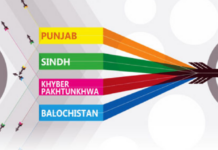The government is set to slash import taxes by Rs120 billion in the upcoming 2025-26 budget as part of a broader strategy to open up the economy and encourage foreign competition.
The Express Tribune reported that Prime Minister Shehbaz Sharif has already endorsed the reduction, which will be implemented over a five-year period, despite concerns raised by the Ministry of Industries and the Ministry of Commerce about the potential negative impact on the manufacturing sector and the balance of payments.
The proposed tax cuts will reduce the number of tariff slabs from five to four, with a maximum rate of 15%, down from the current 20%. These changes are aimed at increasing trade and boosting Pakistan’s exports, but they have sparked concerns that a sudden reduction in tariffs could exacerbate the trade deficit. The Finance Ministry has estimated that even a 1% reduction in duties could increase the trade deficit by 1.7%.
According to the news report, the government intends to reduce tariffs in stages. The new customs duty structure will feature four main slabs: 0%, 5%, 10%, and 20%, replacing the current five slabs. The 3% duty slab will be abolished, with most of the tariff lines moving to the 5% category. This shift is expected to generate around Rs70 billion to offset losses from the tax cuts.
The changes are expected to result in a revenue loss of Rs512 billion, but the government is confident that the losses will be offset by increased tax collection from domestic economic activities. Over the course of the next fiscal year, the trade-weighted average tariff is expected to drop from 10.62% to 9.57%, while the trade-weighted average customs duty will decrease from 5.68% to 5.54%.
Despite the potential risks, including a rise in the trade deficit, the government believes that tariff reduction is crucial for boosting local exports, particularly in industries reliant on imported intermediate inputs and capital goods. However, some officials have cautioned that the reduction may not significantly decrease production costs due to high energy, labor, and productivity costs.
The decision to move forward with these reductions comes amid Pakistan’s ongoing negotiations with the International Monetary Fund (IMF), and it is expected that the IMF will closely scrutinize the impact of these changes during its upcoming reviews.























